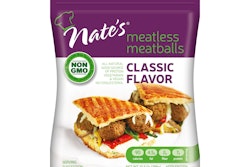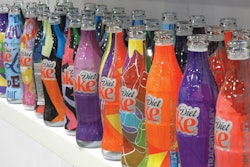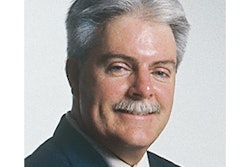Cold chain group shifts toward supply chain integrity
“We have gone from cold chain to temperature control and are now moving to supply chain integrity,” said Rafik Bishara, PhD. “We cover all ranges of temperature, all ranges of security, and all ranges of stability budgets.”
Bishara, Technical Adviser and Leader of the Parenteral Drug Assn.’s Pharmaceutical Cold Chain Cold Interest Group, welcomed more than 750 delegates to the 12th Annual Cold Chain GDP & Temperature Management Logistics Global Forum (www.coldchainglobalforum.com) in Boston.
Domenic J. Veneziano, Captain U.S. Public Health Service, Director, Division of Import Operations, U.S. Food and Drug Administration, delivered a keynote address that reinforced recent FDA claims that the agency has to do business in a more efficient and effective way, and leverage all resources both here in the U.S. and abroad.
“Between now and 2020, China and India are both looking at a 400% increase in the number of products shipped,” said Veneziano. “We must target only shipments that have the potential to affect public health.”
These are the complex challenges of living in a truly globalized world, and the agency has to use intelligence and data to help assess risk.
He updated progress on the Customs and Border Protection program ACE/ITDS. (Automated Commercial Environment/International Trade Data System. This program will provide a single window for CBP and 47 other government agencies to “interact, manage, and oversee import and export data, perform custodial revenue management and support enforcement systems for end-to-end visibility of the entire trade life-cycle,” according to a government Website.
The program has reduced government and private sector costs by eliminating unnecessary paperwork and enabling electronic processing of manifests, entry, and other trade documentation, creating a single, harmonized data set for everyone to work together.
This allows the FDA, for instance, to identify high-risk cargo coming into U.S. ports. The system tests in spring of 2015 and will go live July 2015.
“It’s not good enough to receive transactional data,” said Veneziano. “We need to expedite the process and not cause delays.”
But when the audience offered questions, delays were an issue, especially concerning uniformity of operations between various ports.
“Why is getting products cleared through the FDA different for JFK, Miami, and Boston?” asked one delegate. People start to identify the “easiest” port to go through and concentrate on using that facility alone.
“I can’t make any promises,” answered Veneziano, “but if you contact me I will look at the entry and see why it is being held up. If it is a larger question of staff where maybe people at JFK are asking for more or digging deeper than others, we may have to address training.”
Watch for expanded Chapter <1083> topics
Chapter <1083> Good Distribution Practices (GDPs) is expanding its scope to include APIs, excipients, dietary supplements, and more.
Active pharmaceutical ingredients (APIs), excipients, dietary supplements, medical devices, combination products, reagents, solvents, biologicals, and cell and gene therapies are among topics now included in USP’s General Chapters on GDPs.
These topics, included for the first time, were described in the presentation, “Update on Subjects Becoming Next Sub-Chapters Plus an Overview of Extractables & Leachables from the Transportation Perspective,” by Mary Foster, USP Expert Committee Chair, and consultant with The Foster Group, LLC.
Foster noted that existing General Chapter <1079> on Good Storage and Shipping Practices is aging and that Chapter <1083> provides more current, updated information. To be determined is if GDP Sub-Chapters are needed for Clinical Trials Materials, specifically in the following areas:
• Standard Operating Procedures for blinding
• Labeling
• Risk
• Commercial vs noncommercial clinical trials
• Qualification of packaging
One of the findings brought up by Foster is that biologic products, despite their environmental sensitivities, will be covered within a subchapter on drugs. She said biologics could be given special consideration within the subchapter, noting that USP will seek industry experts in the area of biologics.
Foster noted that there are 24 USP committees that develop and update standards, and are written by experts globally.
In her presentation, Foster noted that there exists a “big issue in handling adulterated drugs, particularly with APIs. She recommended that when such product adultery is uncovered, it’s critical to notify a regulatory authority, not just your supplier.
Foster noted that USP seeks to fill in gaps that may exist between existing current Good Manufacturing Practices and Good Distribution Practices. She also made the following points:
• There are significant changes in environmental conditions management, at facilities, within vehicles, equipment, and among the use of packaging materials, such as thermal blankets, temperature stabilizers, light-resistant materials, and desiccants.
• Contigency plans are needed for outages, breakdowns, and short-term excursions , which represent “one of biggest bugaboos industry deals with,” according to Foster.
Foster again sought industry expertise from among the audience in the event to participate and help shape the future of USP documentation. Areas of focus that become effective next year will include clinical trials, finished drug products (and biologics), excipients, APIs, and packaging components and materials.
What’s the future of logistics for temperature-sensitive healthcare products?
A new survey reveals the need for economically viable reusable passive packaging, and an increased reliance on logistics providers.
Also, regulations will have the greatest impact on the future of temperature-controlled packaging, followed by growth in biological drug therapies and vaccines and rising logistics costs.
Those findings were revealed in a survey entitled, “Assessing The Future Of The Cold Chain Industry,” conducted between Feb. 26 and July 13, 2014 by Sonoco ThermoSafe. The survey was analyzed and prepared by Kevin O’Donnell, Senior Partner, Exelsius.
The survey was presented by Sonoco ThermoSafe largely in video form during an Oct. 2, 2014 presentation at the Boston event.
The top areas in active shipping containers in most need of improvement ranked by survey respondents were price, availability, more robust solutions, reliability, and performance verification. The scores shown on the accompanying chart represent a weighted calculation.
In the glossary of a World Health Organization (WHO) Technical supplement dated Jan. 2014, active systems are defined as “Externally powered or on-board powered systems using electricity or other fuel source to maintain a temperature-control led environment inside an insulated enclosure under thermostatic regulation (e.g. cold rooms, refrigerators, temperature-controlled trucks, refrigerated ocean and air containers).”
Meanwhile, respondents ranked package efficiency, total cost of ownership, lower package price, ease of assembly, and reusability as the highest areas in passive temperature-controlled packaging in most need of improvement.
The WHO glossary describes passive systems as, “Systems which maintain a temperature-controlled environment inside an insulated enclosure, with or without thermostatic regulation, using a finite amount of preconditioned coolant in the form of chilled or frozen gel packs, phase-change materials, dry ice, or others.”
In its executive summary of the survey results, Sonoco Thermosafe noted, “The current logistics spend for temperature-sensitive healthcare products is approximately $8.4 billion worldwide and growing, or about 13% of the overall pharmaceutical logistics market. Approximately $5.6 billion is spent on transportation while another $2.8 billion is allocated to specialized packaging and monitoring devices,” attributing the figures to Lipowicz, M and Basta, N., Supply Chain Logistics 2014 Biopharma cold-chain forecast, Pharmaceutical Commerce, April 29, 2014.
The 26-question survey was co-developed with an advisory panel of industry professionals from Merck, Sanofi, AbbVie, UPS Temperature True Packaging, IQPC, Exelsius, Healthcare Packaging, and Pharmaceutical Commerce. Of the survey’s 165 respondents, there was a near 60-40 split between drug product manufacturers and the supply side. Survey results are available at www.thermosafe.com/survey.
Vaccines and the last mile
Even if manufactured and distributed with complete supply chain integrity, a common household refrigerator can spoil a vaccine.
“After today I hope you come away with a sense of how the last mile is so important,” said Patricia Beckenhaupt, Public Health Analyst for the CDC.
“While I’m talking this morning, think about your next flu shot, or your children’s next visit to the pediatrician for vaccinations, or your elderly parent and their shingles vaccine,” Beckenhaupt told the audience in Boston.
More than 44,000 providers are enrolled in a $4 billion program funded by taxpayers to vaccinate children with no health insurance from poor families. The CDC is charged with oversite of these publicly funded vaccines.
“What we know from CDC data is that at any given time a small provider can have $5,000 worth of vaccines in storage; a larger provider as much as $75,000.”
This past July, Hartford Healthcare in Connecticut was discovered to have improperly monitored storage temperatures in four storage units over a period of a year and a half—an oversite affecting more than 4,000 children, who may have to be vaccinated again.
The CDC wants providers to move toward storage and handling best practice recommendations as soon as possible to avoid these types of situations.
Proper equipment is key, of course, but human behavior matters too. In the case of Hartford Healthcare, a great system was in place, but no one bothered to pay attention.
One of the biggest problems is the common household refrigerator, which is not suited to vaccine storage.
These household units do not maintain temperatures correctly. The compressors do not cycle consistently, air circulation patterns cause warmer areas and cooler areas, and outside temperatures have too much affect when doors are opened and closed. Location of the thermostat is also an issue.
Especially problematic is the dual-zone unit with a freezer on top. Vaccines can freeze on the top shelf of the refrigerator or toward the back of the refrigerator.
It is important to have the right refrigeration unit or freezer for the task at hand. Thermometers used for monitoring temperatures must have valid and current certificate of traceability and calibration testing.
Beckenhaupt stated that all thermometers drift over time, and cold chain requirements are too stringent to be out of calibration more than +/- 5° C.
Providers should access and record temperatures twice a day, and keep records for three years. And the temperature monitor has to be placed precisely in the unit where the vaccines are stored.
The CDC recommends using a data logger with digital display, also needing calibration.
The thermometer probe has to be in a buffered solution, and the probe must be detachable so you can remove the data logger to download data without removing the probe.
“Without following these basic guidelines, chances of excursion are HIGH,” said Beckenhaupt.
Some common errors in vaccine storage and handling:
• Temperature monitor not placed with vaccines
• Device probe sensor is not buffered
• No one is checking temperature on daily basis
• Temperature alarm has been disabled
• Staff not using data provided, nothing done about excursions.
Providers can access a CDC Storage and Handling tool kit at pwgo.to/1203.


























